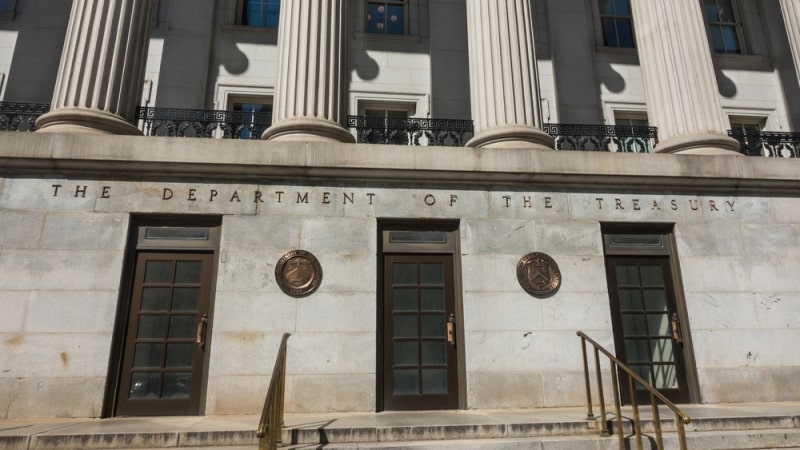
The Treasury Department is asking for input from industry and the public on artificial intelligence, blockchain technology tools, and digital identity verification tech that it can use to detect money laundering and other illegal actions involving digital forms of currency.
In a notice posted to the Federal Register on Aug. 18, Treasury said it is seeking tools to detect crime related to digital currencies such as stablecoin and to comply with Trump administration priorities and new laws regulating digital assets established through the recently passed Guiding and Establishing National Innovation for U.S. Stablecoins Act (GENIUS Act).
Responses to the request for information (RFI) are due by Oct. 17.
“The U.S. Department of the Treasury invites interested members of the public to provide input on the use of innovative or novel methods, techniques, or strategies to detect and mitigate illicit finance risks involving digital assets,” reads the RFI.
Those methods listed in the RFI include AI, digital identity verification, application program interfaces, and blockchain technology and monitoring.
Specifically, the Treasury said it is interested in “portable digital identity credentials” that will “support various elements” of anti-money laundering (AML) and countering the financing of terrorism (CFT) while meeting compliance standards, maximizing user privacy, and reducing “compliance burden on financial institutions.”
“These tools can incorporate different pieces of information, such as government issued identity documents or biometrics, and can vary by operational models, governance, and convenience,” stated the Treasury, adding that the tools should also “potentially be used by regulated digital asset intermediaries to support onboarding or by decentralized finance (DeFi) services’ smart contracts to automatically check for a credential before executing a user’s transaction.”
According to the department, its request for more information on AI services is spurred by the Trump administration’s AI Action Plan, released late last month as a blueprint for the Federal government’s efforts in AI development and deployment.
The Treasury said it is interested in “innovative or novel methods, techniques, or strategies” that financial institutions are issuing to detect illegal activities and limit risk within digital assets. The department said it also wants to know how institutions are using AI to analyze transactional data, including those that occur on blockchains to identify “complex illicit financial networks.”
Blockchain technology that the Treasury is interested in would assist in the agency’s blockchain monitoring – tracking and observing public blockchain data – to detect illegal activity in digital assets. These tools can be used to protect the digital asset ecosystem from drug traffickers, fraudsters, and foreign adversaries, the department said, saying it is looking for industry input on “novel tools, and providing guidance and resources on new technologies.”
“Treasury is conscious, however, that innovative tools may present new resource burdens for financial institutions upon introduction due to costs to acquire and integrate new tools and to building necessary expertise,” the department noted, adding that “it will be critical for financial institutions to evaluate these tools and implement them as part of a comprehensive AML/CFT and sanctions compliance program.”
Questions asked by the Treasury for APIs and blockchain technology include how to deploy the technologies without driving up costs, straining operations, heightening privacy or cyber risks, or falling short on effectiveness.
